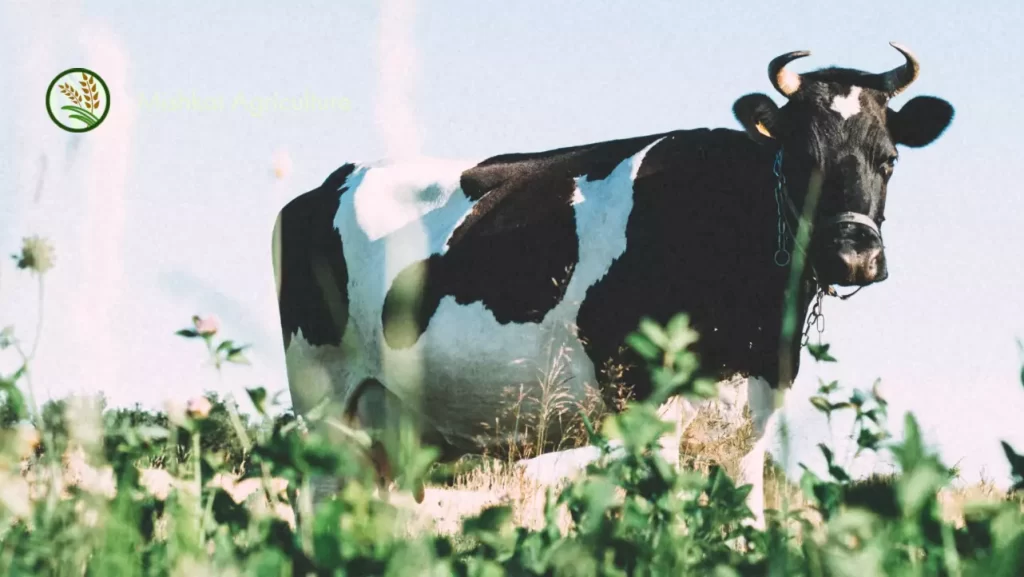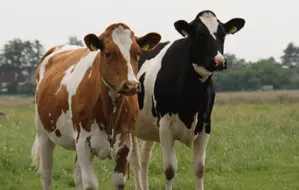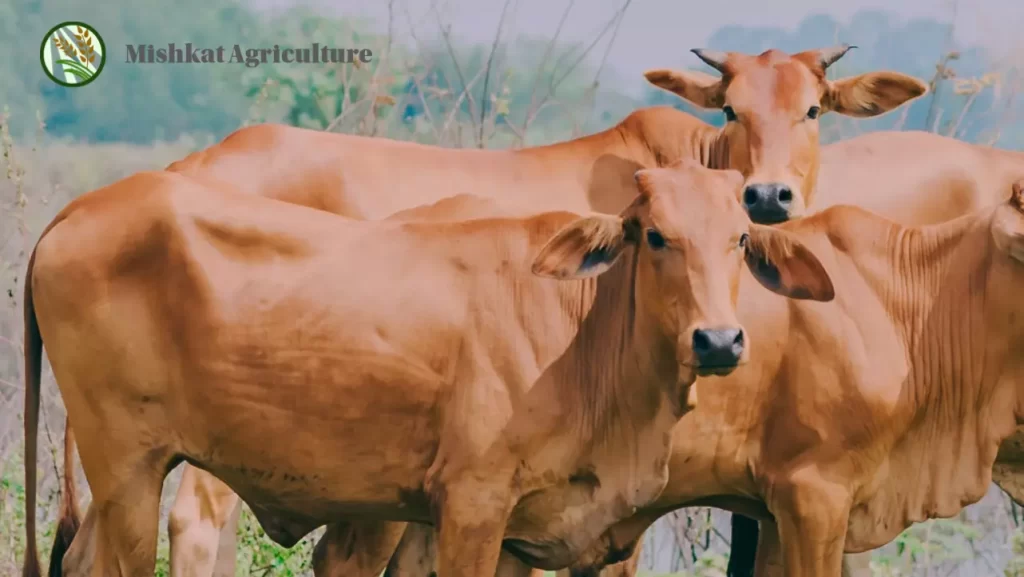Dairy cow farming in Bangladesh. Planned cow rearing is a lucrative activity. There is a lot to be gained by keeping cows properly with little, medium and more capital of all kinds. The house should be in a fairly open place for keeping cows; Construction of houses with bamboo, straw, straw and jute;
The floor of the house should be sloped and drained so that lime and water can flow out; Clean food and water containers regularly every day; When the meal is over, the pots should be covered.
The cow should be bathed regularly; Regular barn cleaning of manure every day should be done and deposited in a specific place or hole. Which later became valuable fertilizer; Choose cow dung, flies, leeches, unwanted insects; The health of the cows should be checked regularly; Cattle from the Upazila Livestock Office should be vaccinated against smallpox, scabies, measles, mumps and rabies; In case of cattle disease, it is necessary to contact the veterinarian or the nearest Upazila Livestock Office.
Place of receipt of improved breeds of dairy cow
Manikganj, Jessore, Khulna, Kushtia, Faridpur, Tangail, Syedpur, Thakurgaon, Chirirbandar, Rangpur Sadar, Bogra Sadar, Rajshahi Sadar, Dhaka Sadar, Narayanganj Sadar, Comilla Sadar, Chittagong Sadar, Sylhet Sadar, Baghabarighat Milkvita area, Savar area , Varkuta, Ati area of Keraniganj upazila is notable. Cows of improved breeds or crossbreds should be selected for rearing.
Daily Balanced Food List (in grams)
Rice powder 250; Wheat bran 250; Khail 250; Pulse husk 250; Chittagong 200; Salt / mineral; The mixture contains 50 grams of vitamins.
In addition, at least 3 kg of straw or 9-12 kg of raw grass and plenty of cold clean water should be fed daily.
Caring for calves
300 grams of rice powder; 300 grams of wheat bran; 250 grams of khail; 150 grams of chitagur; 50 grams of salt and vitamins.
Also adequate amount of hay, green grass and pure cold water should be fed. At six months of age, calves should be vaccinated against infectious diseases. The calf should be given anthelmintic medicine according to the doctor’s advice. A balanced diet should be given keeping in view the health.
Basic needs of dairy cow
First of all, initial preparation is required to build anything. The success and failure of any work depends on this preparation. Building a dairy farm requires financial consistency, experience and safe shelter for cattle. First of all, it is better to work on a small scale without building a huge firm. It is better to expand the farm slowly with 5 to 6 cows. It is better to hire a skilled person for 2 cows. However, care must be taken whether the person has previous experience in caring for cows.
The selection process
It is better to build a cattle farm in one’s own area, especially in Muffsball. In this case, it is necessary to select improved breeds of cattle. If improved breeds of cows are not selected, diseases will continue to afflict the farm throughout the year. In addition to good breeds of cows, the farm should have adequate grass and hay. After the establishment of the farm, a campaign should be launched for the sale of milk.
Location selection
Dairy farms need to be set up in the vicinity of these areas where transportation is good and there is ample opportunity to sell milk. There should be high walls around, eco-friendly housing, adequate light and air and space for the cows to rest and walk. It is better to stay near the cattle drug store and raw grass farm.
Food delivery
For dairy farms, the first priority is to feed the cows. The right amount of milk is not available without adequate and quality food. Adequate collection of rice husk, wheat husk, gram, khesari husk, salt, khail, coconut husk, grass should be kept. Many times stale and rotten food is provided to the cows. Which is never right.
This can lead to various diseases in cattle. Always make sure that the cow’s food is clean and nutritious. Therefore, these products which are rotten or kept for a long time should not be fed to cows. Cows should be cared for separately during pregnancy and gestation. At this time you need to maintain constant contact with the local veterinarian.
Income-expenditure
Dairy cow farm is a long term activity. It is wrong to expect immediate benefits. On the contrary, good results can be obtained by slowly recovering. On an average, it will cost 30-50 thousand rupees to buy one cow. In addition, the higher the number of cows, the lower the cost. At present, people from various sweet shops and confectioneries in the city come directly to the farm to collect milk. On an average, it is possible to sell milk from one cow for 4-5 thousand rupees per month. Apart from the cost, this benefit is not less for a family.
Attendance in dairy cow farm
Improved breeds of cows are helpful for dairy farms. In this case New Zealand or Australian cow breed can be chosen. Therefore, it is better to consult with the livestock and livestock officer. There should be separate mosquito net, fan and dirt cleaning system for each cow. It is also important to pay attention to lighting and cleanliness for lighting.
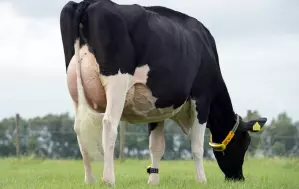
Dairy cow health care
There are veterinary centers in almost every upazila of the country. Besides, training is also given to the farmers officially. In addition to assistance from various government institutions, there are opportunities to take loans from banks. Trained youths from Youth Development, Krishi Bank, Grameen Bank, Karmasangsthan Bank can also get large loan assistance without collateral. This can be a wonderful job for unemployed educated youth. So I try to change my own destiny and become financially prosperous by running such a dairy farm.
How to increase cow’s milk production
The quantity and quality of cow’s milk production depends on the breed. The amount of milk produced by a dairy cow can be more or less the same as the milk components such as butter, meat, minerals in different breeds of cows. Due to hereditary potential, the milk yield of native breeds of cows is high but they produce less milk. The amount of butter in milk of Sindhi, Shahiwal, Haryana breed cows is more than other foreign breed cows like Holstein, Friesian, Jersey etc. breed cows like Sindhi, Shahiwal, Haryana etc.
Food has a significant impact on cow’s milk production and milk quality. The more food you eat, the more milk you get. However, the diet must be balanced. If the cow is not fed a balanced diet, the amount of milk production decreases alarmingly and the quality of milk is also forced to decrease. This is because the elements present in the food are excreted through milk in different conditions. The presence of milk butter in the diet can increase or decrease. For that type of food the rate of cow’s milk butter may be lower. Then-
- If you eat too much granular food
- When eating pellets
- If you eat extra juicy food
- Feeding finely powdered straw
When the amount of butter in cow’s milk decreases, it is necessary to change the diet and eat the necessary balanced diet. The amount of minerals and nutrients in milk can be increased through cow feed. If the cow is not given a balanced diet, the milk contains a small amount of carbs and sugars and the amount of milk production decreases. Milking especially the milking period, milking time, milking process, effects of different milks etc. affect the quantity and quality of milk of cows.
The amount of milk given to cows gradually increases to a maximum of 50 days. The amount and composition of milk in Olan depends on the pressure of the milk. After 90 days of lactation, the rate of butter and meat in milk increases partially. If the same dairy cow is milked at short intervals, the amount of butter in the milk is more. So the amount of butter in the afternoon milk is more than the morning milk. So the cow should be milked 2-3 times in 24 hours. This can increase the amount of milk production.
The health of the cow during childbirth is very important for the expected milk production. In order to get more milk from cows, it is necessary to give proper care and balanced diet during pregnancy. Milking of cows must be stopped two months before delivery. 40% of the total milk production comes from the front part of the udder and 30% from the back part.
The udder of the dairy cow must be healthy. Mainly responsible for maintenance, housing, reduction and increase in the quantity and quality of cow’s milk production. The surrounding conditions should be comfortable for the dairy cow. If special care is not taken during milking, i.e. if milking is defective, the quantity and quality of milk production may decrease.
Adverse weather is detrimental to milk production. The winter season is comfortable for dairy cows. During this season milk production and the amount of butter in the milk increases, in summer, rainy season, humid weather the production and quality of cow’s milk decreases. Keeping the cow in a cool position in hot weather does not cause any loss of production. Milk production decreases during cow breeding.
Giving birth at long intervals increases the milk production of the dairy cow. Milk production may be somewhat reduced due to short intermittent delivery. So the cow has to be reared within 80-90 days of calving. In no case should breeding be done before 60 days. Dairy cows have 50% water in their body and milk contains about 8%. Therefore, if the dairy cow is given enough water to drink, the milk production is higher and the amount of butter in the milk is higher.
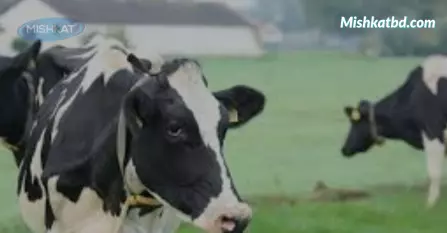
Caring for the big udder of the dairy cow
The larger the body size of a cow producing more milk, the bigger its udder. These dairy cows have to be taken care of carefully. While getting up and sitting down, rubbing on the concrete floor of the shed caused wounds in Olan. And the cows get sick due to the attack of diseases and germs due to dung or lime. If there is a problem in Olan, milk production decreases. If mastitis is severe, sometimes one or more of the ulcers have to be amputated. Then milk production comes down to less than half.
Dairy scientists believe that sand floors are healthier instead of concrete to avoid injury problems in Olan. This sand floor has to be made in a special process. The soil should be removed from the floor of the shed at a depth of about one and a half meters.
Then you have to put big tires in at least two layers. Clean sand should be spread on the tires. Sand must be free of gravel, bricks, pieces of iron or any other sharp object. This sand should be collected from the disease free area.
As the sand floor is soft, the cow will not get any kind of injury while standing or sitting. Olan will be protected from injury problems. The advantage of this floor is that the cow dung easily falls into the sand and dries up. However, care should be taken to ensure that the sand does not get wet. For this you have to clean the dung at least twice a day. All sand should be inverted at least three days a week.
When the upper sand rises below and the lower sand rises, the disease-germs will not be able to reproduce, the disease will not have a chance to nest. The old sand of the shed has to be discarded and new sand has to be given for six consecutive months.
In this way we can raise cows profitably at low cost.
Account of keeping 10 milk producing dairy cows
It is possible to calculate the income and expenditure of keeping cows by calculating the rearing of 10 milk producing cows. It is very important to keep an account of income and expenditure in order to benefit from keeping cows. Let’s know about the account of keeping 10 milk producing cows-
Cost calculation in dairy cow farming
Construction of cow house 20 feet 20 feet (tin above, walls around) Tk. 80,000
Purchase of 10 cows (milk cows with calves) at Tk. 60,000 each, totaling Tk. 8,00,000
Including utensils 10,000 taka
Cost of granular food per day (Rs. 200 for 1) for 10 (2000 × 30): Rs. 60,000 (per month)
Raw grass and hay also cost Rs. 100 per month for other food, Rs. 100 for 1 as well as Rs. 30,000 per month for 10
Medicine, vitamin (monthly) 5000 taka
6,000 for installation of tubewell
Water supply motor 8,000 taka
6 fans total 16,000 taka.
Total cost 9,48,000. taka
Labor cost 2 people @ 5000 taka per month, total 10,000 taka
Electricity bill is 5000 rupees per month.
There is a fixed cost that will be incurred once and later only for repairs.
Fixed cost- 9,22,000 taka
Current cost per month: taka 110,000, and current expenditure will be taka
Income from cow farm
Each cow will give 10 liters of milk daily. The price is 50 rupees per liter. An average of 50 × 10 = 500 rupees per day can be obtained from the milk of a cow. Then the income from the milk of 10 cows will be 500 × 10 = 5000 rupees per day. As a result from selling milk of 10 cows in 30 days 5000 × 30 = 1,500,000 rupees.
Cows will give an average of 10 liters of milk for about 6 months. Then the amount of milk will continue to decrease.
Income from selling milk in 6 months is 1,500,000 × × = 12,000,000 rupees.
8,80,000 running costs in 12 months;
Total income = 12,00000- 8,80,000: 3,20,000 taka
After 6 months, the net profit is 320000 taka
After 6 months, the amount of milk will be reduced. Will come down to 5 liters on average. Then 50 liters of milk can be obtained from 10 cows. If sold at 50 rupees per liter, the daily income from 50 liters of milk is 2500 rupees. Income in 30 days 2500 × 30 = 75000 rupees.
Then the income from selling milk in the first 6 months is 12,000,000 rupees + 1,500,000 rupees in the next 2 months. The total income from the sale of milk is Rs.
Between 1 to 2 months of calving, the cows have to be given artificial insemination. Cows will give birth about 8-9 months after artificial insemination. Then give 12-15 liters of milk each time. This cow can be kept for 4 to 5 years. After 1 year, one calf can be sold for around 25 to 30 thousand rupees. After 3 years the calves will be pregnant again. Then the price of one will be 50 to 60 thousand rupees. For this reason, the calves should be kept and the bulls should be sold.
Cows need to be given granular food, raw grass, hay, rice husk and plenty of water. In the following years, there will be no cost to build a house, no need to buy cows. After 6 months, the cows will give milk again. The previous calf will be bigger. At this time the cost of building a house, the cost of buying a cow, the cost of building a tubewell will no longer be required, but the cost of food will increase.
The previous 10 cows, 10 big calves, the new 10 small calves will have 30 cows in all. If there is a bull in the previous calf, then it should be sold. If there are 5 bulls out of 10 calves, then if you sell them for 25 thousand rupees each, you will get 25,000 × 5 = 1,25,000 rupees. It can be more income.
In addition, money can be earned from selling calves and selling dung every year. After milking the cows for 4 to 5 years, they have to be sold. Such a cow can be sold for 60 to 70 thousand rupees.
Note that dairy cow farms do not make much profit at first, the cost of milk production and the income from the sale of milk is very low, but yes, the baby you get every year will bring you a good profit in dairy cow Cattle Farming.
Read More: Medications to increase the appetite of cattle and the reason for the decrease in appetite
